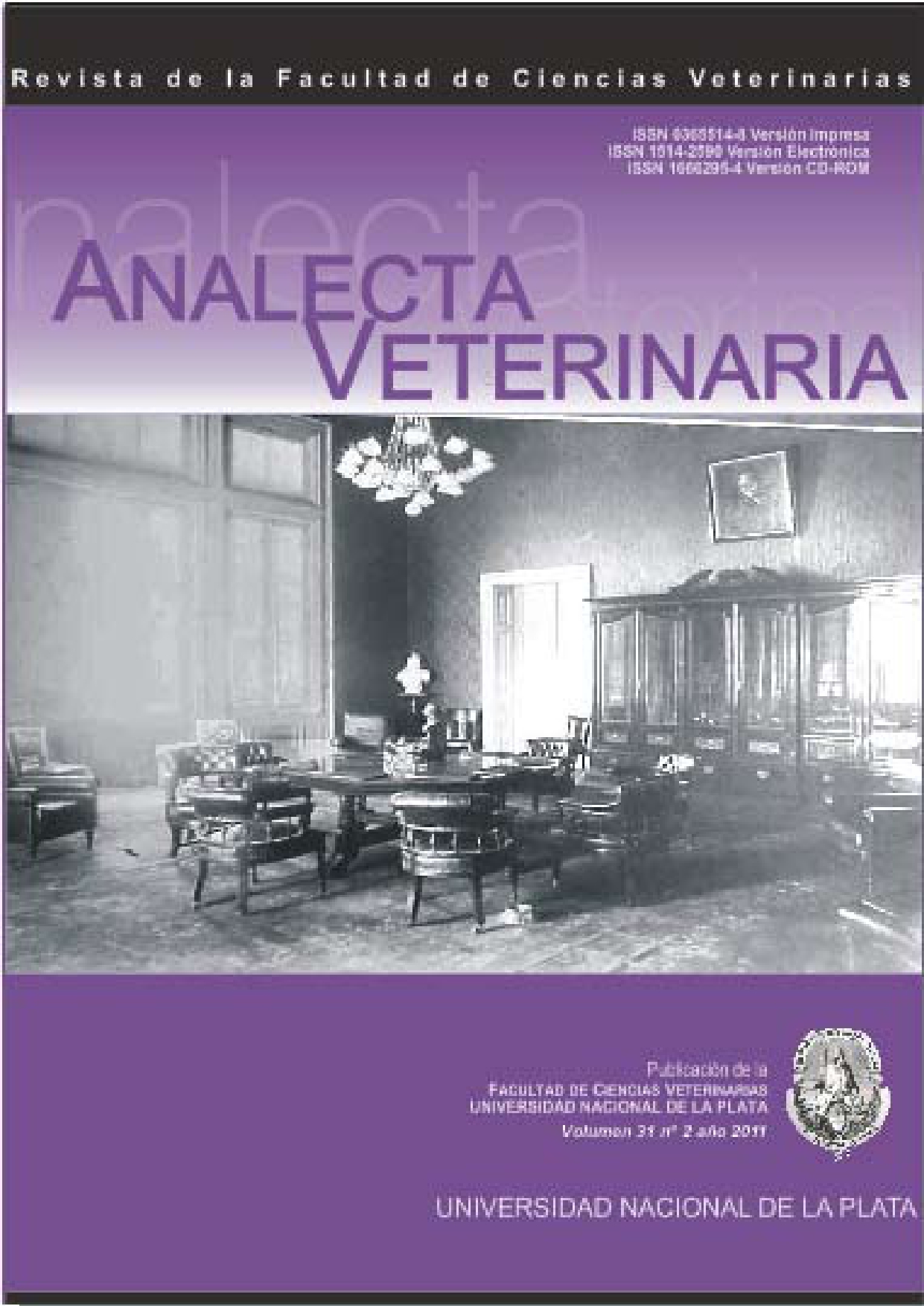Comportamiento dinámico del peso corporal temprano en pollos de carne con diferente edad al mismo peso objetivo de faena
Palavras-chave:
peso corporal inicial, peso objetivo de faena, función exponencial, tasa de crecimiento, pollo camperoResumo
Con el objetivo de caracterizar el comportamiento del peso corporal en dos poblaciones de pollos de crecimiento lento (híbrido simple Casilda CP y Campero INTA) en comparación con el parrillero comercial Cobb 500, se pesaron en forma individual, a intervalos semanales entre el nacimiento y la faena, 20 machos y 20 hembras de cada grupo. Los datos peso corporal - edad se ajustaron a un modelo exponencial creciente y los valores de los estimadores de los parámetros S (valor de inicio) y k (tasa de crecimiento) correspondientes a cada ave se utilizaron como nuevas variables aleatorias. En ambos sexos Cobb 500 mostró mayor valor de S sin que se observaran diferencias significativas entre los grupos de crecimiento lento. No se observaron diferencias significativas entre grupos en los valores de k. La intensa selección por velocidad de crecimiento aplicada a las poblaciones de reproductores pesados, responsable de la reducción del número de días requerido para alcanzar un determinado peso objetivo de faena, habría afectado la regulación del proceso en un nivel muy primario de la cadena de eventos vinculados con la fenogénesis del peso corporal, fijando un nivel más elevado de esta variable respuesta sin modificar la tasa de crecimiento relativo.
Downloads
Métricas
Referências
Marks HL. Growth rate and feed intake of selected and unselected broilers. Growth 1979; 43: 80-90.
Chambers JR, Gavora, JS, Fortin A. Genetic changes in meat type chickens in the last twenty years. Can. J. Anim. Sci. 1981; 61: 555-563.
Havenstein GB, Ferket PR, Scheider SE, Larson BT. Growth, livability, and feed conversion of 1957 vs 1991 broilers when fed “typical” 1957 and 1991 broiler diets. Poult. Sci. 1994; 73: 1785-1794.
Scheele CW. Pathological changes in metabolism of poultry related to increasing production levels. Vet. Q. 1997, 19:127-130.
Yunis R, Ben-David A, Heller ED, Cahaner A. Immunocompetence and viability under commercial conditions of broiler groups differing in growth rate and in antibody response to Escherichia coli vaccine. Poult. Sci. 2000; 79:810–816.
Koenen ME, Boonstra-Blom AG, Jeurissen SHM. Immunological differences between layer- and broiler- type chickens. Vet Immunol Immunopath 2002; 89: 47–56.
Cheema MA, Qureshi MA, Havenstein GB. A com- parison of the immune response of a 2001 commercial broiler with a 1957 randombred broiler strain when fed representative 1957 and 2001 broiler diets. Poult. Sci. 2003; 82:1519-529.
Emmerson, DA. Commercial approaches to genetic selection for growth and feed conversion in domestic poultry Poult. Sci. 1997; 76: 1121-1125.
Bonino M, Canet ZE. El pollo y el huevo campero. INTA, 1999.
Bonino, M.F. Pollo Campero. Protocolo para la certificación. INTA EEA Pergamino, 1997.
Sheskin, D.J. Handbook of parametric and nonpa- rametric statistical procedures. Chapman & Hall. USA. 2000.
Dottavio AM, Álvarez M, Canet ZE, Font MT, Di Masso RJ. Patrón de crecimiento de híbridos experi- mentales para la producción de pollo campero. Rev. Arg. Prod. Anim. 2007; 27 (2): 75-82.
Downloads
Publicado
Como Citar
Edição
Seção
Licença
Los autores/as conservan los derechos de autor y ceden a la revista el derecho de la primera publicación, con el trabajo registrado con la licencia de atribución de Creative Commons, que permite a terceros utilizar lo publicado siempre que mencionen la autoría del trabajo y a la primera publicación en esta revista.

Analecta Veterinaria por Facultad de Ciencias Veterinarias se distribuye bajo una Licencia Creative Commons Atribución-NoComercial-SinDerivar 4.0 Internacional.



























